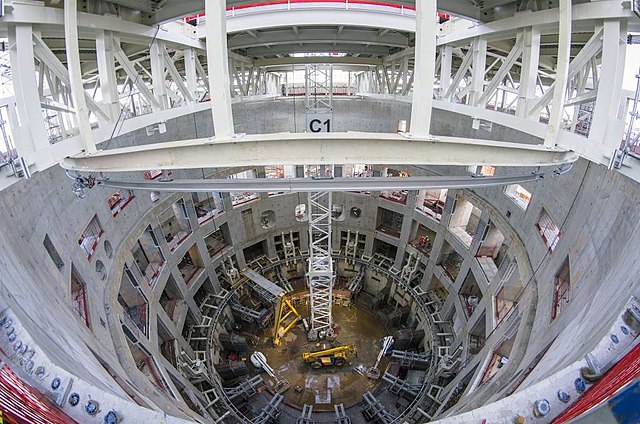Fusion: the power of the future
Photo by Oak Ridge National Laboratory via Creative Commons Attribution 2.0
The interior of this building contains the tokamak of ITER, which is where the fusion reaction takes place.
Fusion power is the energy source of the future.
Fusion power is the fusing of hydrogen atom nuclei into helium. A fusion device called ITER is currently being built in southern France by 35 nations, including the European Union, Japan, India, Russia, China, United States, Switzerland and the United Kingdom.
ITER is a tokamak, a device that converts the fusion energy into electricity by creating steam which drives turbines.
ITER, and fusion power itself, has benefits that are better for energy production and the environment. Fusion power produces a surplus of energy for humans, as much as nearly four million times that of energy sources like coal.
Fusion power needs to become widely utilized because it is a sustainable energy source and its fuel is highly obtainable. The fuel sources are deuterium and tritium, which can be found or distilled from many sources on Earth, and these sources will be available for a long time. Fusion also doesn’t produce carbon dioxide, unlike other forms of energy sources.
ITER won’t create any long lived radioactive waste. Whatever material is used can be recycled in the span of 100 years. It is also a safer form of energy production because if anything disturbs the device, the reaction will stop, eliminating the risk of a meltdown.
ITER’s many benefits prove that fusion power is the nuclear energy option for the future. Fusion power is much safer for the environment, as well as for human society. The fuel needed is highly available, and fusion power will create an excess of energy, allowing more energy to be available for cities and businesses around the world for decades to come.
To access a VR tour of the ITER complex and its progress through the years click here.
Your donation will support the student journalists of Delaware Valley Regional High School. Your contribution will allow us to attend conventions, purchase equipment and cover our annual website hosting costs.

Emmit Paulus is a sophomore at Del Val and it is his second year working on "The Delphi". He enjoys working on articles, writing and drawing in his free...



















































































